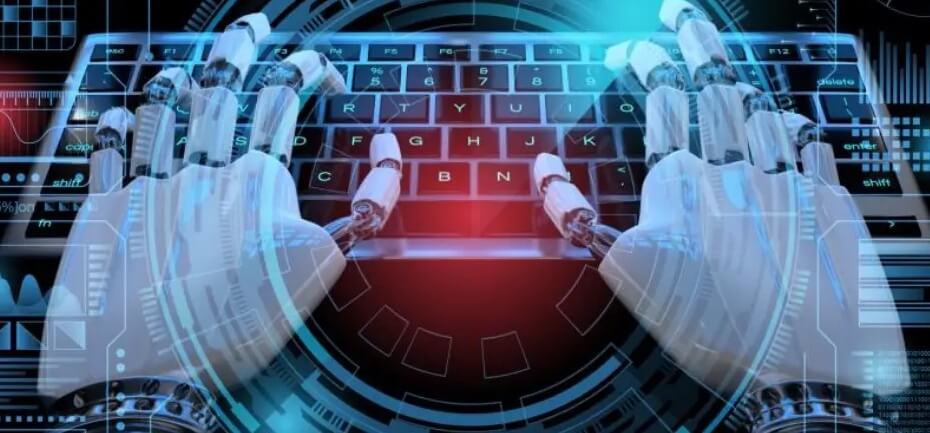Warfare no less has been up a road of technological advancement, geopolitical rivalry, and changing concepts of military strategy.

The most paradigmatic transition from conventional weapons, such as the Kalashnikov rifle, in the face of sophisticated cyber-based warfare means the shifting nature of 21st-century security threats.
Whereas traditional warfare relied heavily on physical battlefields and kinetic force, the emergence of AI-cyber warfare represents a whole new dimension of warfare compatible with the interests of states, non-state actors, and even individuals exercising this power without any requirement for the theater of direct physical engagement.
Hence, from this revolution of threats, a plethora of security dilemmas arose, thereby seeking innovative approaches to counter impending threats of AI warfare. In this modern age, warfare via AI is more than just a transformation in the cyber conflict; it is, henceforth, a real paradigm shift to new conflict waging, controlling, and even perceiving mechanisms.
AI cyber-operations can disrupt national security regimes, meddle into political processes, and attack critical infrastructures. The automation of cyberattacks in combination with the ability of AI to gather and analyze enormous amounts of information and issue commands at unprecedented speed creates a situation that challenges traditional hats of deterrence.
The conflict has shifted from conventional warfare to armed robotic warfare, and states must rethink their defense posture since cyberspace can paralyze economies, sway public opinion, and instigate conflicts without firing a single shot.
Accountability and attribution are some of the most baffling challenges related to the weaponization of AI. In conventional warfare, military adversaries are clearly defined in terms of tangible actions, while in cyber warfare, everything is obscured under the veil of imprecise lines of responsibility. AI-generated misinformation campaigns, paired with deepfake technology and automated hacking tools, may rise, shifting the attack source from its original point of origin. Impediments include very minimal attribution of such sources toward international responses and risks of unintended escalations.
Furthermore, if AI is invested into the cyber tool warfare arsenal of state and non-state actors alike, it raises the specter of asymmetric warfare-style engagements in which the technologically advanced nations are not the exclusive bearers of disruption in military capability.
These case studies clearly indicate how the relevance of AI-powered cyber warfare has risen to today’s conflicts. Such Russian cyber activities demonstrated how AI-fuelled disinformation campaigns could affect democratic processes during the 2016 U.S. presidential election. It has also used highly developed AI algorithms and automated social media bots in addition to targeted propaganda manipulation and extensive deployment for manipulation of public opinion. Similar state control and resistance suppression is exhibited through the use of AI in surveillance technologies such as those in Xinjiang. AI-fueled facial recognition, predictive policing, and mass data-monitored surveillance raise concerns about these elements in the weaponization of AI for domestic control, which may well be shaping future scenarios for geopolitical conflict.
The newest flashpoints between Russia and Ukraine have become entirely artificial intelligence-driven examples of warfare. The effectiveness of AI is already setting the stage for cyber operations directed at government institutions in Ukraine. AI-rich hacking continental systems, like every other person’s attack on Ukraine’s critical power and communication networks, are under evolution. This has disrupted Columbia not only militarily but also reveals some signals of how cyber warfare is taking an increasingly active role in modern military doctrine.
How AI is being integrated into national military operations today is demonstrated by satellite image analysis and algorithm-based battlefield decision-making systems, as well as autonomously flying drones. Although AI warfare keeps getting scarier, it also has some shining prospects of bettering global security. Such systems may be detection systems for threats, automated processes for cybersecurity, and machine learning-enabled counterintelligence.
AI may have a key role in peacekeeping and conflict resolution, under the capacity to inform and predict possible flashpoints through data analysis while strengthening diplomatic negotiation, as well as enhancing international cooperation against cyber threats. However, AI’s dual-use nature emphasizes the necessity of putting in place adequate policy directives via which such capability would not go into the destabilizing determinations.
To tackle the issue of AI warfare becoming an eminent threat, we put forth some recommendations to help steer provisions in the pertinent direction. First, the international legal frameworks themselves need to be revisited to include, and thus reflect, all relevant peculiarities regarding AI cyber conflict. While existing conventions such as the Geneva Conventions or the Tallinn Manual form a skeletal prescription-existing legal principles to regulate an augmented field of cyber operations; these conventions must see their scope-imposed meanings expanded where AI-controlled hostile cyber operations are concerned.
In effect, we would argue for a new international treaty addressing arms control for AI with similarities to the nuclear non-proliferation treaty, halting any uncontrolled research and development of technology for autonomous warfare. Second, states should invest in an AI-oriented cyber-security architecture to safeguard their critical assets from bona-fide cyber acts.
Governments will need to work in partnership with the private sector and institutions to develop advanced AI-based defense mechanisms that can ensure resilience against evolving threats from cyber attacks. Cybersecurity procedures should be updated continuously to counter emerging AI-enhanced hacking techniques, while national defense strategies should take into account AI threat analysis for securing their assets in advance.
As a third point, ethical considerations should be placed in AI governance mechanisms so that AI will not be weaponized for destabilizing conflicts. There are strong ethical dilemmas raised by AI-enabled warfare, including the possible loss of human control over autonomous weapons, the risks of biased decision-making algorithms, and the effects of disinformation produced by AI on democratic institutions.
Therefore, it will be necessary to formulate apparent ethical guidelines governing military applications of AI to prevent human rights abuses and further compliance with international humanitarian law. Above all, international cooperation within a wide spectrum of AI security governance ought to be emphasized. Cyber warfare is transnational by its very nature; hence, countries must work together to create standard cybersecurity norms.
Multilateral organizations like the United Nations, NATO, as well as other regional coalitions, are called upon to play an important role in developing AI security policies, mechanisms through which information should flow and responses to be adopted in cases of cyber threats. Another way that society would be able to manage risks presented by AI in cyberspace is through public awareness regarding AI generated misinformation and cyber hygiene practices.
The Kalashnikov rifle has long symbolized one military paradigm-the conventional war; it is being replaced by a new domain- the AI-driven cyber warfare paradigm that can define the future of military conflicts in the 21st century.
Even with this change, an artificial intelligent attack has new capabilities to disrupt, manipulate and control digital environments, creating new dimensions of warfare and challenging age-old concepts such as security, deterrence and conflict resolution.
Although AI poses serious threats to cyberspace and will continue to do so, it cannot be forgotten as something that expands defense capabilities, peacekeeping possibilities, and security governance. By undertaking strict legal, technological and ethical safeguard measures, the global community has a chance to reduce the risks associated with an AI-infused warfare milieu and thereby taking advantage of its potential for making the world more stable.
As through advances in artificial intelligence military strategies become inscribed into the very fabric of the geopolitical landscape, actions taken up proactively and in cooperation will be crucial to ensuring that the passage from bullets to bytes does not undercut international security.
Author: Rana Danish Nisar – Independent international analyst of security, defense, military, contemporary warfare and digital-international relations.
(The views expressed in this article belong only to the author and do not necessarily reflect the views of World Geostrategic Insights).







